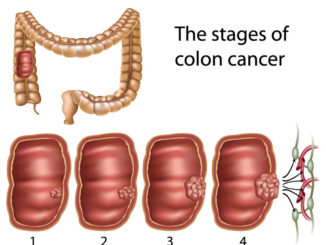
The problem with stage IV (4) non-small cell lung cancer (NSCLC) is that it is metastatic – meaning that it is at an advanced stage due to having spread to other parts (organs) of the body. In close to 40% of all lung cancer cases, the patient’s cancer is already at stage IV when diagnosed, making it NOT curable, but STILL treatable (although not common, there have been patients who have lived with stage IV for many years).
Stage IV lung cancer basically defines the lung tumor (at any size) to have metastasized (spread) to another region (area) of the body, another lobe of the lung, or is accompanied by a malignant pleural effusion (an abnormal amount of fluid is present in the space between the layers of tissue [the pleura] that line the lungs). Symptoms may include the following:
- A persistent cough, and hoarseness (sometimes coughing-up blood [hemoptysis/haemoptysis]).
- Arm, back, hip, and shoulder pains (metastasis).
- Difficulty in swallowing (invasion into the esophagus).
- Headaches, visionary problems, seizures and weakness (brain tumor invasion).
- Jaundice (yellowing of the skin due to liver invasion).
- Pneumonia or bronchitis (recurrent).
- Shortness of breath and wheezing.
Treatment – for stage IV lung cancer is usually considered inoperable due to surgery being unable to remove all of the tumor. However, other treatments are still available. For example: chemotherapy (most common), or some of the more modern targeted therapies (including clinical trial therapies).
Radiation therapy is often recommended as a palliative therapy (complementary therapy) to help control the cancer, but does not help in curing it (as with most options). It may help control pains such as those of the bones when metastasis is present, bleeding of the lungs, obstructions of the airways (shortness of breath) caused by enlarged tumors, and brain metastasis (headaches, and general bodily weakness).
Prognosis (life-expectancy) – for most is sadly short (10% 5-year survival rate, with the median survival [time at which 50% of patients are still alive, and 50% are deceased] of only around 8-months). Any prognosis estimate will be evaluated on an individual basis due to individual influential factors, such as: age, general health, treatment choice and response, and the characteristics of the tumor.
Proudly WWW.PONIREVO.COM



